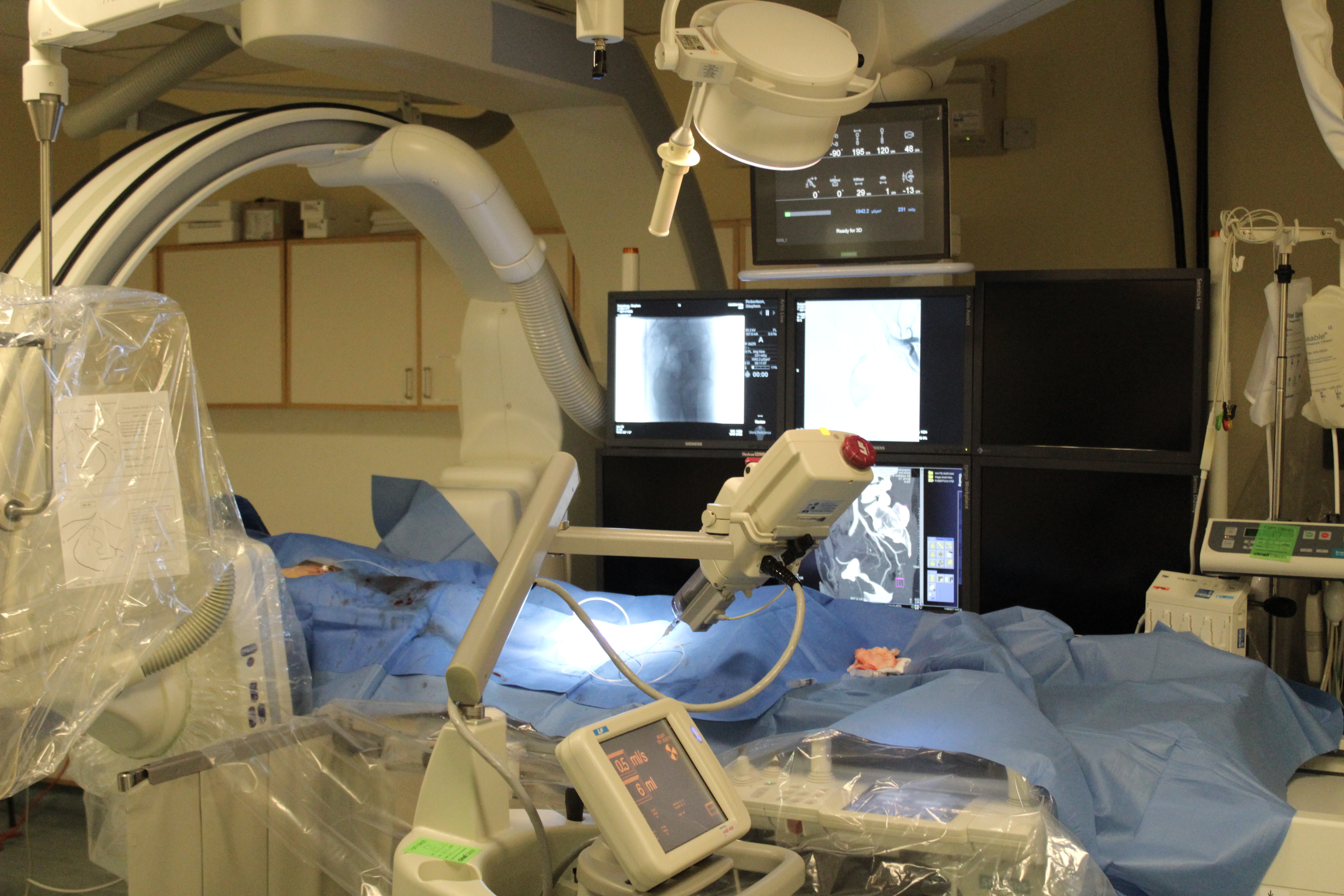Why choose prostate artery embolisation (PAE) for treating enlarged prostate?
PAE is a new and exciting treatment option for men with benign prostatic hyperplasia (BPH) or enlarged prostate, and it has been described as a real "game changer". Utilising collaboration between consultant interventional radiologists and urologists, it is a minimally invasive procedure that provides very real benefits over more traditional surgical options including TURP. Here Dr Nigel Hacking, who pioneered the innovative procedure in the UK, explains why it is now considered to be the best treatment for this common condition.
Why does the size of the prostate gland needs to be reduced?
Benign prostatic hyperplasia is an extremely common health condition in men, occurring in around a third aged over 50, rising to 50% by 60 years and 90% by the age of 85. The prostate is a small walnut-sized gland that it responsible for making the fluid part of semen in men. It swells naturally with age, although it is not altogether clear why. Unfortunately, due to its location just below the bladder, as it increases in size it starts to put pressure on the urethra, the tube that carries urine from the bladder. As a result, this often leads to problems with urination, including urgency to urinate (especially at night), leakage of urine, a weak urine stream or trouble starting urination. These symptoms can become extremely troublesome and have a serious impact on quality of life. Furthermore, if left untreated they can cause other problems including bladder, kidney and urinary tract infections.
Men with BPH who are largely symptom free tend to be advised to wait and see how things develop. Mild to moderate BPH will usually be treated with lifestyle changes and medication in the first instance, including from the two main classes of drugs, alpha blockers and 5-alpha reductase inhibitors. However, if the symptoms become more severe then surgery may become necessary.
PAE has received NICE Approval, and NICE state,"This technically demanding procedure should only be done by an interventional radiologist with specific training and expertise in prostatic artery embolisation."
Considerations for treating enlarged prostate
The surgical option for BPH that has traditionally been considered the best method is called trans-urethral resection of the prostate (TURP). This procedure involves surgically removing much of the central part of the prostate, creating a channel in order to relieve the pressure on the urethra. It is generally safe, but it has a number of significant drawbacks both in terms of the procedure itself and the considerable potential side effects including loss of sexual function and fertility.
Furthermore, it is performed under general anaesthetic, which means that it is not an option for many men, and it requires at least 2 nights stay in hospital. On top of this there is then a four- to eight-week recovery time. The most common side effect, occurring in as many as 90% of men who have the treatment, is retrograde ejaculation. This is when semen flows backwards into the bladder during ejaculation rather than out of the penis. Up to 10% of men who have TURP will also suffer from erectile dysfunction. Another quite common side effect is urinary incontinence and although this usually gets better within a few weeks, it can also be a long-term issue. Up to 10% of men will need to have repeat TURP within 10 years, as the remaining prostate simply becomes enlarged again.
Benefits of PAE
When set alongside TURP then PAE is seen by many as a better option. The procedure is carried out using local anaesthetic and can usually be done as a day case. It involves an interventional radiologist inserting a small catheter into an artery in the upper thigh or wrist using x-ray guidance. The catheter is then threaded into the arteries that are supplying the prostate with blood and tiny plastic particles are injected into these arteries to deliberately block the blood flow to the prostate. This causes the prostate tissue to shrink back in size, relieving the pressure on the urethra. Symptoms can start to improve very quickly - even within the two weeks after the treatment - meaning that men can return to normal activities much sooner. Complications are very rare and mostly involve minor bruising to the groin. Furthermore, the common side effects of TURP described above are avoided and fertility is preserved.
What are patients saying about PAE?
This video link is useful for a quick overview to see what is involved in the treatment and for some patient feedback on the BBC.
Mr DW
Mr DW describes his experiences starting with why he decided to seek PAE as a preferred form of treatment, what happened when trying to self-refer himself for this new procedure, what he found during the procedure itself and how the treatment has relieved his symptoms.
His full patient experience report of PAE is available via the link. He concludes his feedback saying:
"I did not need the analgesics, and noticed an improvement in urination in the first week. I did have some interesting but painless bruising in the groin and right leg due to blood leakage, and this disappeared after a week or so. The easing of urination continued over the ensuing weeks and at week three I stopped the Tamsulosin. At the three month follow up MRI scan in Southampton my prostate was the same size as that of a young man- down from 58mls to 26mls. In the daytime my urination is now pretty well normal. At night I still have to get up about twice a night, but I can live with that, and there is the possibility of further progress. I am very happy with the outcome, glad that I had a PAE, and feel very grateful for the help of Dr Hacking and his team in Southampton. Oh, and four months on, I am still waiting to hear when my NHS Urology appointment will be.
With Best Wishes,
DW"
See - Prostate artery embolisation - the patient's view
Professor MWR
Another patient, Professor M who was suffering from severe lower urinary tract symptoms caused by an enlarged prostate, has provided a full case report - Prostate artery embolisation - the patient's feedback
Professor M concludes his report saying:
"The improvement has been dramatic. The flow rate has reduced to a controllable stream rather than a torrent and I have had no leakages worth commenting on, no more trouser and underpants smelling of urine. I can go for much longer periods without the urgency to urinate. I wake in the night at most once to relieve myself and now get a good night’s sleep of 7-8 hours. My total IPPS score now is 4. The embolisation thanks to the skill of Dr Hacking has been a total success. I am still living in a period of post embolisation elation."
Patients are generally reporting that they are delighted by the good results that are achieved using PAE and the considerable benefits that it offers for men suffering from the problematic symptoms of BPH.
Inability to maintain a penile erection for sexual intercourse, also referred to as impotence.
Full medical glossary

